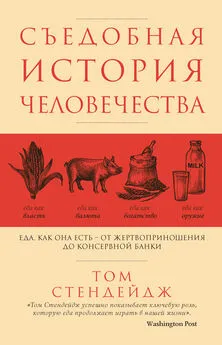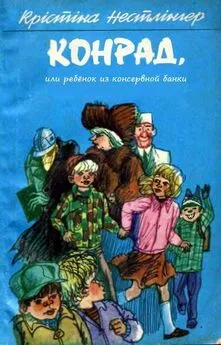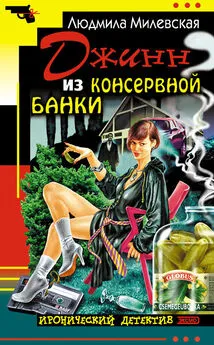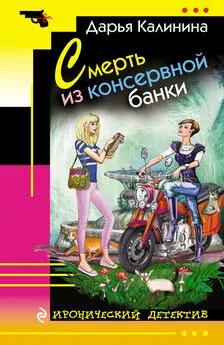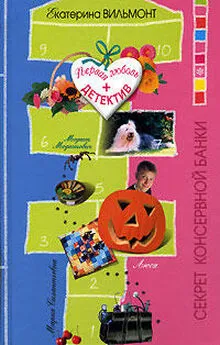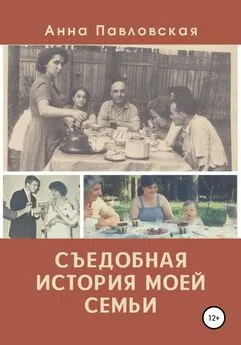Том Стендейдж - Съедобная история человечества. Еда как она есть – от жертвоприношения до консервной банки
- Название:Съедобная история человечества. Еда как она есть – от жертвоприношения до консервной банки
- Автор:
- Жанр:
- Издательство:Эксмо
- Год:2020
- Город:Москва
- ISBN:978-5-04-106072-5
- Рейтинг:
- Избранное:Добавить в избранное
-
Отзывы:
-
Ваша оценка:
Том Стендейдж - Съедобная история человечества. Еда как она есть – от жертвоприношения до консервной банки краткое содержание
Съедобная история человечества. Еда как она есть – от жертвоприношения до консервной банки - читать онлайн бесплатно ознакомительный отрывок
Интервал:
Закладка:
D’Souza, Frances. Democracy as a Cure for Famine. Journal of Peace Research 31, No. 4 (November 1994): 369–373.
Dalby, Andrew. Dangerous Tastes: The Story of Spices. London: British Museum Press, 2000.
Dalrymple, Dana. The Soviet Famine of 1932–1934. Soviet Studies 15, No. 3 (January 1964): 250–284.
Daniels, John, and Christian Daniels. The Origin of the Sugarcane Roller Mill. Technology and Culture 29, No. 3 (July 1988): 493–535.
Davis, Johnny. Svalbard Global Seed Vault: Ark of the Arctic. Daily Telegraph, February 16, 2008.
Deaux, George. The Black Death, 1347. London: Hamilton, 1969.
Delgado, L.C., J. Hopkins, and V.A. Kelly. Agricultural Growth Linkages in Sub-Saharan Africa. International Food Policy Research Institute Research Report No. 107. Washington, D.C.: International Food Policy Research Institute, 1998.
Diamond, Jared. Evolution, Consequences and Future of Plant and Animal Domestication. Nature 418 (August 8, 2002): 700–707.
Doebley, John. The Genetics of Maize Evolution. Annual Review of Genetics 38 (2004): 37–59.
Doepke, Matthias. Accounting for Fertility Decline During the Transition to Growth. Journal of Economic Growth 9 (2004): 347–383.
Drayton, Richard. Nature’s Government: Science, Imperial Britain, and the Improvement of the World. New Haven: Yale University Press, 2000.
Dupanloup, Isabelle, Giorgio Bertorelle, Lounès Chikhi, and Guido Barbujani. Estimating the Impact of Prehistoric Admixture on the Genome of Europeans. Molecular Biology and Evolution 21(7): 1361–1372, 2004.
Easterbrook, Gregg. Forgotten Benefactor of Humanity. The Atlantic 279, No. 1 (January 1997): 75–82.
Ellman, Michael. The Role of Leadership Perceptions and of Intent in the Soviet Famine of 1931–1934. Europe-Asia Studies 57, No. 6, 2005: 823–841.
Engels, Donald W. Alexander the Great and the Logistics of the Macedonian Army. Berkeley, Los Angeles, and London: University of California, 1978.
Erdkamp, Paul. Hunger and the Sword: Warfare and Food Supply in Roman Republican Wars (264–30 BC). Amsterdam: Gieben, 1998.
Erisman, J. W., M. A. Sutton, J. Galloway, Z. Klimont, and W. Winiwarter. How a Century of Ammonia Synthesis Changed the World. Nature Geoscience 1 (2008): 636–639.
Evans, Lloyd T. Feeding the Ten Billion: Plants and Population Growth. Cambridge: Cambridge University Press, 1998.
Evenson, R. E., and D. Gollin. Assessing the Impact of the Green Revolution, 1960 to 2000. Science 300 (May 2, 2003): 758–62.
Fan, S., P. Hazell, and S. Thorat. Government Spending, Growth, and Poverty: An Analysis of Interlinkages in Rural India. EPTD Discussion Paper No. 33. Washington, D.C.: International Food Policy Research Institute, 1998.
Fernández-Armesto, Felipe. Columbus. Oxford: Oxford University Press, 1991; Food: A History. London: Macmillan, 2001.
Fogel, Robert William. Without Consent or Contract: The Rise and Fall of American Slavery. New York: W.W. Norton, 1989.
Foster, C., K. Green, M. Bleda, P. Dewick, B. Evans, A. Flynn, and J. Mylan. Environmental Impacts of Food Production and Consumption: A Report to the Department for Environment, Food and Rural Affairs. London: DEFRA, 2006.
Fussell, Betty. The Story of Corn. New York: Knopf, 1992.
Gaidar, Yegor. Collapse of an Empire: Lessons for Modern Russia. Washington, D.C.: Brookings Institution Press, 2007.
Garnsey, P. Food and Society in Classical Antiquity. Cambridge: Cambridge University Press, 1999.
Gilman, Antonio. The Development of Social Stratification in Bronze Age Europe. Current Anthropology 22, No. 1 (1981): 1–23.
Gollin, Douglas; Stephen L. Parente, and Richard Rogerson. The Food Problem and the Evolution of International Income Levels. Working Papers 899, Economic Growth Center, Yale University, 2004.
Gray, Louis Herbert, ed. The Mythology of All Races. New York: Cooper Square Press, 1978.
Gulati, Ashok; Shenggen Fan, and Sara Dalafi. The Dragon and the Elephant: Agricultural and Rural Reforms in China and India. International Food Policy Research Institute, MTID Discussion Paper 87. Washington, D.C.: International Food Policy Research Institute, 2005.
Gunn, Geoffrey. First Globalization: The Eurasian Exchange, 1500–1800. Lanham, Mary land: Rowman & Littlefield Publishers, 2003.
Hampl, Jeffrey, and William Hampl. Pellagra and the Origin of a Myth: Evidence from European Literature and Folklore. Journal of the Royal Society of Medicine, 90 (1997): 636–639.
Hayden, Brian D. Archaeology: The Science of Once and Future Things. New York: W.H. Freeman, 1993.
Herlihy, David. The Black Death and the Transformation of the West. Cambridge, Massachusetts: Harvard University Press, 1997.
Higman, B. W. The Sugar Revolution. The Economic History Review, new series, 53, No. 2 (May 2000): 213–36.
Ho, Ping-Ti. The Introduction of American Food Plants into China. American Anthropologist, new series 57, No. 2, part 1 (April 1955): 191–201.
Hobhouse, Henry. Seeds of Change: Five Plants that Transformed Mankind. London: Sidgwick & Jackson, 1985.
Johnson, Allen W., and Timothy Earle. The Evolution of Human Societies: From Foraging Group to Agrarian State. Stanford, California: Stanford University Press, 2000.
Jones, E. Agricultural Origins of Industry. Past and Present 40, 1968: 58–71.
Keay, John. The Spice Route: A History. London: John Murray, 2005.
Keegan, John. A History of Warfare. London: Hutchinson, 1993.
Kiple, Kenneth, and Kriemhild Ornelas, eds. Cambridge World History of Food. Cambridge: Cambridge University Press, 2000.
Kiple, Kenneth F. A Movable Feast: Ten Millennia of Food Globalisation. Cambridge: Cambridge University Press, 2007.
Landes, David. The Wealth and Poverty of Nations: Why Some Are So Rich and Some So Poor. London: Little, Brown, 1998.
Langer, William. American Foods and Europe’s Population Growth 1750–1850. Journal of Social History 8, No. 2 (Winter 1975): 51–66.
Lee, Richard Borshay. The Kung San: Men, Women and Work in a Foraging Society. Cambridge: Cambridge University Press, 1979.
Lehane, Brendan. The Power of Plants. London: John Murray, 1977.
Lehner, Ernst, and Johanna Lehner. Folklore and Odysseys of Food and Medicinal Plants. London: Harrap, 1973.
Lynn, John A., ed. Feeding Mars: Logistics in Western Warfare from the Middle Ages to the Present. Boulder, Colorado: Westview Press, 1993.
Malanima, Paolo. Energy Crisis and Growth 1650–1850: The European Deviation in a Comparative Perspective. Journal of Global History 1, 2006.
Malthus, Thomas. An Essay on the Principle of Population. London: J. Johnson, 1803.
Manning, Richard. Against the Grain: How Agriculture Has Hijacked Civilization. New York: North Point Press, 2004.
Marks, Robert . The Origins of the Modern World: A Global and Ecological Narrative from the Fifteenth to the Twenty-first Century. 2nd edition. Lanham, Mary land: Rowman & Littlefield, 2006.
McGee, Harold. McGee On Food & Cooking: An Encyclopedia of Kitchen Science, History and Culture. London: Hodder and Stoughton, 2004.
McNeill, William H. How the Potato Changed the World’s History. Social Research 66 (Spring 1999): 67–83.
Michalowski, Piotr. An Early Dynastic Tablet of ED Lu A from Tell Brak (Nagar). Cuneiform Digital Library Journal 2003: 3.
Miller, J. Innes. The Spice Trade of the Roman Empire, 29 BC to AD 641. Oxford: Clarendon Press, 1969.
Mintz, Sidney Wilfred. Sweetness and Power: The Place of Sugar in Modern History. New York: Viking, 1985.
Mithen, Steven. After the Ice: A Global Human History 20 000–5000 BC. Cambridge, Massachusetts: Harvard University Press, 2004.
Moore, John. Mobility and Strategy in the Civil War. Military Affairs 24, No. 2, Civil War Issue (Summer 1960): 68–77.
Murray, Sarah. Moveable Feasts: From Ancient Rome to the 21st Century, the Incredible Journeys of the Food We Eat. London: Macmillan, 2007.
Nafziger, George. Napoleon’s Invasion of Russia. Novato, California: Presidio, 1998.
Needham, Joseph, and Francesca Bray. Science and Civilisation in China vol. 6 Biology and Biological Technology, part 2, Agriculture. Cambridge: Cambridge University Press, 1984.
Newman, Lucile F., ed. Hunger in History: Food Shortage, Poverty, and Deprivation. Oxford: Blackwell, 1990.
O’Rourke, Kevin, and Jeffrey Williamson. Did Vasco da Gama Matter for European Markets? National Bureau of Economic Research, Working Paper 11884, 2005.
Ogilvie, Brian. The Many Books of Nature: Renaissance Naturalists and Information Overload. Journal of the History of Ideas 64, No. 1 (January 2003): 29–40.
Pinhasi, Ron; Joaquim Fort, and Albert Ammerman. Tracing the Origin and Spread of Agriculture in Europe. PLoS Biology 3, No. 12 (2005): e410.
Pollan, Michael. The Omnivore’s Dilemma: A Natural History of Four Meals. New York: Penguin Press, 2006.
Pomeranz, Kenneth. The Great Divergence: China, Europe, and the Making of the Modern World Economy. Princeton, New Jersey: Princeton University Press, 2000.
Reader, John. Propitious Esculent: The Potato in World History. London: William Heinemann, 2008.
Riehn, Richard K. 1812: Napoleon’s Russian Campaign. New York: John Wiley & Sons, 1991.
Rotberg, Robert I., and Theodore K. Rabb, eds. Hunger and History: The Impact of Changing Food Production and Consumption Patterns on Society. Cambridge: Cambridge University Press, 1985.
Roth, Jonathan. The Logistics of the Roman Army at War (264 BC–AD 235). Leiden: Brill, 1998.
Rothenberg, Gunther Erich. The Art of Warfare in the Age of Napoleon. Bloomington: Indiana University Press, 1977.
Sahlins, Marshall David. Stone Age Economics. London: Tavistock Publications, 1974.
Salaman, Redcliffe N. The History and Social Influence of the Potato. Cambridge: Cambridge University Press, 1949.
Scammell, G.V. The World Encompassed: The First Europe an Maritime Empires. Berkeley and Los Angeles: University of California, 1982.
Schivelbusch, Wolfgang. Tastes of Paradise: A Social History of Spices, Stimulants, and Intoxicants. Translated by D. Jacobson. New York: Vintage, 1992.
Schom, Alan. Napoleon Bonaparte. New York: HarperCollins, 1997.
Sen, Amartya. Democracy as a Universal Value. Journal of Democracy 10, No. 3 (1999): 3–17.
Shephard, Sue. Pickled, Potted and Canned: The Story of Food Preserving. London: Headline, 2000.
Smil, Vaclav. China’s Great Famine: 40 Years Later. British Medical Journal 319 (1999): 1619–1621.
Spaull, C. The Hekanakhte Papers and Other Early Middle Kingdom Documents, by T. G. H. James. (Review) Journal of Egyptian Archaeology, 49 (1963): 184–186.
Steinberg, Theodore. An Ecological Perspective on the Origins of Industrialization. Environmental Review 10, No. 4 (Winter 1986): 261–276.
Stuertz, Mark. Green Giant. Dallas Observer, December 5, 2002.
Subrahmanyam, Sanjay. The Career and Legend of Vasco da Gama. Cambridge: Cambridge University Press, 1997.
Читать дальшеИнтервал:
Закладка:
